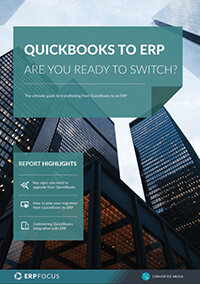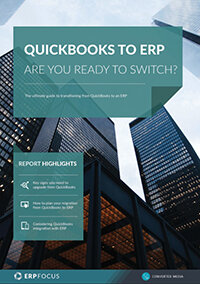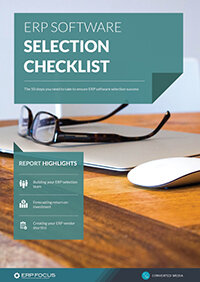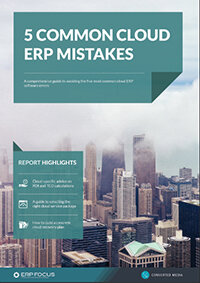The mistake first-time ERP buyers make (and how to avoid it)
Many small, rapid-growth companies create problems for themselves when considering an initial ERP purchase. It isn’t that they aren’t smart enough, detailed enough, or innovative enough; but simply that the application of real-time resources technology tends to demand different skill sets than the average small-business operator.
First steps
As a first principle, in order to understand ERP effectively, automation up and down the operational chain is intrinsic. Unfortunately, many small businesses grow on the basis of purely iterative business rules, where the boss makes all the decisions and the ‘Indians’ simply turn the wheels.
However, as we know, ERP technology doesn’t operate that way, and this reality forces everyone and ‘everything’ to behave differently; whether it’s the boss all the way down to the shipping dock worker. On top of this overarching metamorphosis in business philosophy, practical processes change as well, including the ways that business data is handled.
For example, where in the past largely rudimentary accounting processes may have served amply to ensure that individual products were sold and accounted for successfully, today’s market systems like to append single-transactions with hosts of other non-specific transactions, such as real-time market metric tracking, or the indexing and storage of activities relating to social networks.
Guide: Quickbooks to ERP - are you ready to make the switch?
Consequently, and given this kind of transactional complexity, a simple sale transaction becomes only one information-driven element on the way toward successfully resolving today’s business puzzle. To close this thought loop, then, let’s take a closer look at how a simple accounting transaction can apply in the case of a current ERP system, versus a largely-passive legacy system like a QuickBooks, Excel or paper accounting process.
Flat is flat while integrated isn’t - but there’s more to it than that
Rather than simply generating a comparison list between a flat system and one of today’s real-time ERP platforms, perhaps a different perspective will be most useful when it comes to the biggest mistake made during a jump from one system philosophy to the other. Now; note that I am primarily orienting myself to ‘philosophy’ not ‘functionality’, since in my view this is really where most mistakes foster larger failures later.
Let’s return to our previous simple sale transaction as a baseline event. What happens when you execute a single sales transaction on a paper ledger? In effect nothing, other than expending the effort necessary to type, or physically write down the necessary elements, and potentially manually roll up the ledger’s total. However, there are no other active implications involved; you’re done, so move on the next sales target.
However, in the case of integrated ERP, a host of other direct and indirect processes trigger; that in turn drive other internal activities in real-time. Just some of these events range from the execution of automated inventory level reductions, ‘total revenue’, ‘total cost’ roll-ups, and the generation of new customer records such as who, where, what and how the transaction was managed, to comprehensive horizontal sales record-keeping, and finally, the generation and consolidation of records based on the ultimate delivery of information for senior management.
Are your processes ready for ERP?
The point here is not that mistakes may or may not occur due to increases in reporting, but how a failure to clearly address this philosophical difference may cause an enterprise to ignore the implications of larger administrative issues downstream. Consequently, when jumping from a simple to complex system, it is paramount that any small-business operator spends the time necessary to properly research, document, test, and educate him/herself well before a final decision is made.
This requires patience, and diligence, but most importantly, an understanding of how the individual business operates now, and how it ‘must’ behave later, because the application of ERP literally changes ‘everything’ within the enterprise environment. If this requirement is not rigidly adhered to, then there will be a significant chance that the company ‘may’ end up writing a check that it won’t be able to be cover, leading to bad things for all involved.
Free white paper

Quickbooks to ERP: Are You Ready to Switch?
Get the definitive guide to converting your business from Quickbooks to ERP

Featured white papers
-

ERP Software Pricing Guide
Get the latest pricing information on over 80 popular ERP systems, and learn how to budget for your ERP project in our free guide
Download -

60-Step ERP Selection Checklist
Get the comprehensive checklist for your ERP selection project
Download -

Five common cloud ERP mistakes
Get your comprehensive guide to avoiding the five most common cloud ERP errors
Download
Related articles
-

Top 10 causes of ERP implementation failure (and how to avoid it)
Few people in an organization ever understand how difficult an ERP implementation is, and how a f...
-

CMMC Compliance: What Aerospace and Defense Manufacturers Need to Know
Key insights on CMMC compliance, deadlines, and securing DoD contracts with CMMC 2.0 certificatio...
-

The best ERP systems for process manufacturing
Consider these ERP systems when selecting your next process manufacturing ERP

